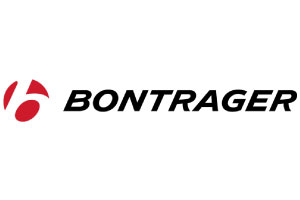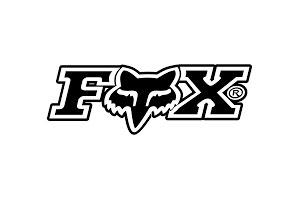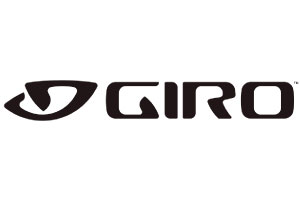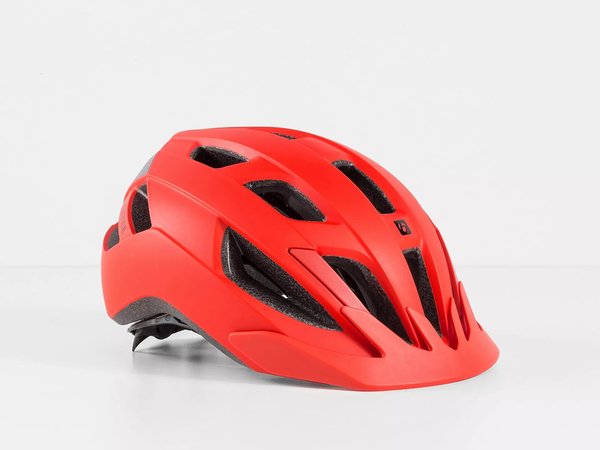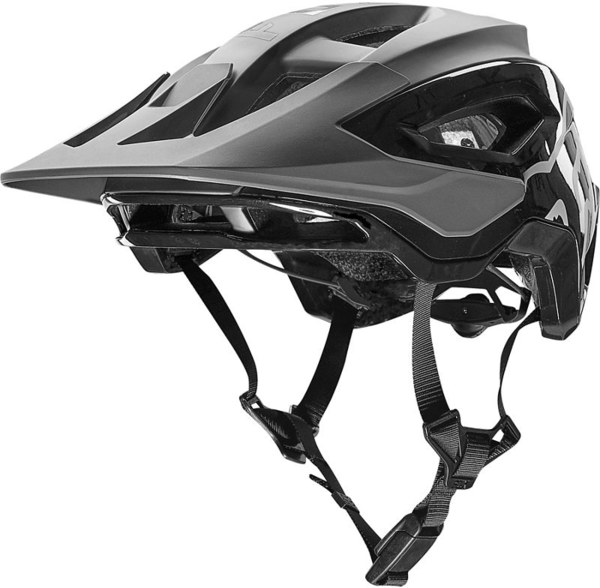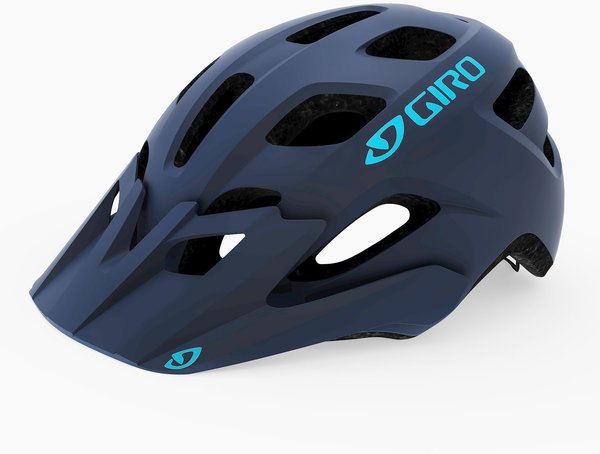
How to Choose the Right Helmet
In this guide, we’ll help you figure out how to choose a bike helmet that you’ll actually enjoy wearing, whether you’re out on the trails or commuting to work.
Here are three things to consider when buying a bike helmet:
- Choose a style that makes sense for how you ride (mountain, road, commuting, etc)
- Choose the features that are important to you (MIPS, adjustable visor, magnetic buckle, etc)
- Choose the right size
Let’s jump in!
Pick the Right Bike Helmet Style
You’ll want to pick up a helmet that’s designed for the riding you like to do most. While you can definitely use any helmet for any type of riding, there are specific features in each helmet style that are designed to make your rides as enjoyable as possible.
Check out the different styles of bike helmets below:
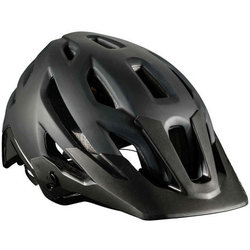
Mountain Bike Helmets
If you mostly ride trails, a mountain bike helmet is your best bet.
Mountain bike helmets cover more of the back of your head and typically come with a larger visor for blocking out the sun and other elements (like rain and tree branches). Some MTB helmets used for aggressive riding come with chin guards.
They won’t be as light as a road bike helmet but they are designed to better protect you in the kinds of crashes that are more common while mountain biking.
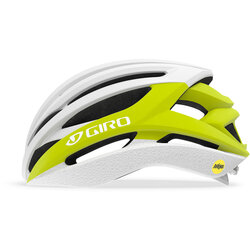
Gravel & Road Bike Helmets
Gravel and road bike helmets are designed to be light and aero for more speed benefits.
They typically don’t come with visors since the majority of dedicated road/gravel riders will often go for a cycling cap if a visor is needed.
They will also usually feature large ventilation patterns that cool you off as you hammer out the miles.
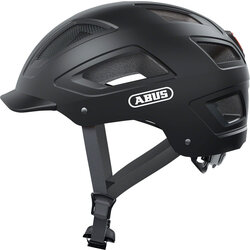
Multi-use & Commuter Bike Helmets
Some of our most popular models fall into the multi-use and commuter categories.
These helmets are usually very affordable and offer riders exactly what they’re looking for: a comfortable helmet that’ll keep them safe.
As such, the design for this style is more about safety and comfort rather than serious performance benefits.
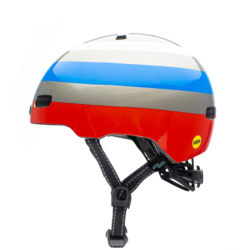
Kids Bike Helmets
Getting kids to wear helmets can sometimes be a little challenging, so starting off with a helmet that they like is important.
With models for everyone from toddlers to early teens, kids bike helmets are often designed with the same principles as the multi-use adult helmets.
Safety, comfort, and cool colors are the primary goals in this category.
Choose a Helmet with Features You Like
After you’ve decided on the style that suits you best, you’ll want to browse through the options and pick out some of your favorite features. Little design elements can go a long way in helping you enjoy your helmet.
Here are some of the top features to look for:
- MIPS: MIPS is an additional liner that sits in between the pads and the shell of the helmet. It stands for Multi-directional Impact Protection System and it helps deflect some of the force from rotation impacts which are much more common in cycling than head-on impacts. MIPS is found in lots of brands of helmets. Wavecel is a similar technology found only in Bontrager helmets.
- Removable/adjustable visor: If you like your helmets to have a visor, being able to easily adjust or remove it is extremely helpful.
- Easy to use adjustment dial: There are a few different kinds of helmet adjustment technologies available that make tightening and loosening your lid super easy. Systems like BOA and others make tiny, on-the-fly adjustments quick and easy.
- Magnetic strap buckle: This feature is great for both kids and adults. No one likes pinching their neck in the buckle, so magnetic buckles are a favorite for lots of riders. Plus, they are easy to use with gloves.
- Ventilation pattern: The more vents you have, the better you’ll be able to breathe and cool off. High activity riders like mountain and road bikers usually want more vents than a year round commuter.
- Weight: Weight is usually mostly a factor for the road and gravel crowd who want to give themselves the best speed advantages possible. In every category, higher priced models will typically be lighter than entry level models.
- Light/camera integration: If you want to attach a headlight, taillight, or GoPro to your helmet, you’ll want to make sure that your helmet design can accommodate that.
- Visibility: Having a helmet with a highly visible color or reflective elements can help you stay safe on the road.
Find the Right Bike Helmet Size
Once you’ve picked out a helmet that fits your style of riding and has your favorite features, all you have to do is pick out the right size.
That sounds easy, but lots of people get it wrong. Here are some tips for getting the right size:
- Start by measuring the circumference of your head just above your eyebrows. You can use a flexible measuring tape or even a piece of string.
- Use that number (usually measured in either inches or centimeters) and compare your measurement with the bike helmet size chart for the brand you’ve chosen.
- If you’re right in between sizes, sometimes it’s best to go for the larger size. You can always cinch your helmet down, but a helmet that’s too tight around the temples will be no fun to ride in.
Once you get the right size, making the helmet fit properly is the final step. Here are some tips for getting the right fit:
- Make sure the helmet covers your forehead but sits above your eyebrows. If it doesn’t fit over your forehead it’s the wrong size. Lots of people incorrectly wear their helmet tilted too far back, keep it level so it protects you fully.
- Ensure the straps aren’t so loose that you can push the helmet out of position. If you shake your head and the helmet slides around, tighten your straps.
- Leave a little room (about two fingers worth) in between your neck and the strap.
- Keep the ear buckle below your ears
A note about bike helmet size charts:
There isn't a single size chart for all brands, and increasingly, there are even different size charts for different types of helmets within the same brand. Sizes are generally similar across the board, but you'll definitely want to look up the size chart for the specific helmet you're interested in.
Some "universal" style helmets come in sizes designed to fit a wide range of people, and they come in sizes like S/M and M/L. Other helmets that are dedicated for certain types of riding (road racing/downhill mountain biking) will usually stick to specific sizes like S, M, L, and XL. But remember, those sizes may be slightly different for different brands/styles, so always check before you buy.
What about womens bike helmets?
The only differences between a womens bike helmet and a unisex helmet are typically:
- 1: Womens bike helmets are often sized to fit slightly smaller heads
- 2: They usually come in additional color options
Our Best Bike Helmet Brands
Our Best Selling Bike Helmets
Bontrager Solstice MIPS Helmet
The Bontrager Solstice MIPS helmet is a perfect buy for both men and women who want a great multi-use helmet with MIPS technology at an affordable price.
Price: $64.99
FOX Speedframe Pro Helmet
The Fox Speedframe Pro helmet is a good choice for mountain bikers looking for superior protection, comfort, and adjustability.
Price: $159.95
Giro Verce MIPS Womens Helmet
The Giro Verce MIPS helmet is a great-fitting ladies helmet that provides great protection on the trail while still offering plenty of comfort.
Price: $65.00
More Protective Gear
If you love riding mountain bikes and want some extra protection out on the trails, take a look at all our protective armor for sale. We sell elbow pads and knee pads as well as padded shirts and shorts so you can send it safely and with more confidence.

